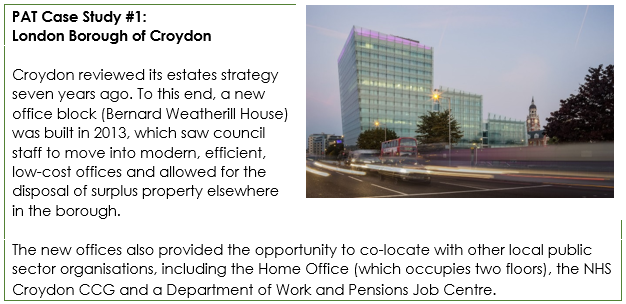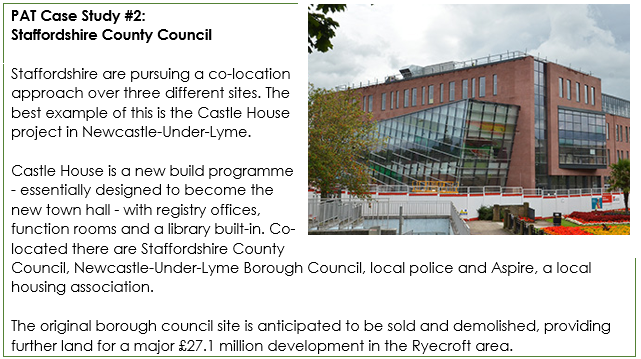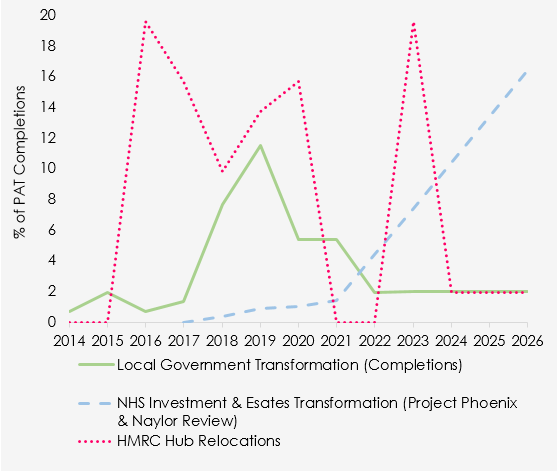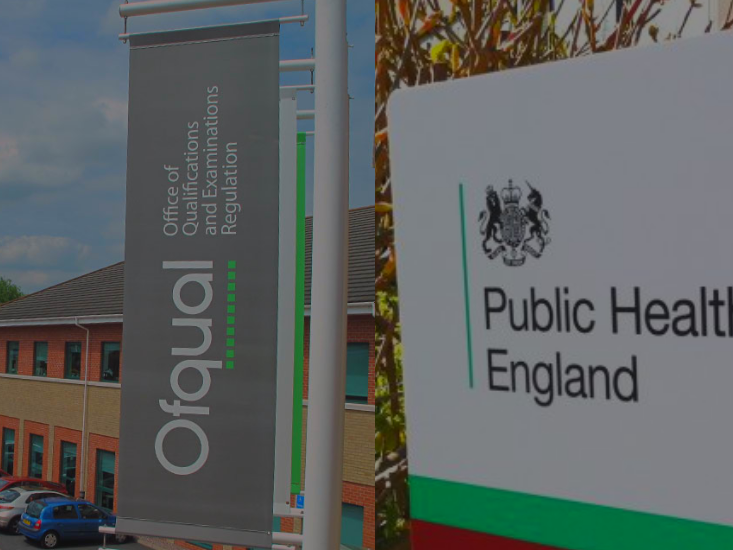Out of Sync:
Local Authority Transformation is Missing Out on the Bigger Picture
Ongoing DragonGate research has established that 2018/19 will be a high watermark for Local Government property transformation, with approximately 70 projects due to be completed over the next 24 months. However, with adjacent sectors such as the NHS, Higher Education and Central Government implementing similar programmes for property transformation there is little evidence that opportunities for place based collaboration are truly being embraced.
DragonGate has been carrying out research over the past year into Local Government estates strategies and has focused on the increasing number of major property asset transformation projects (PATs) which share the following characteristics:
- Make use of existing sites in local authority ownership
- Look to bring local authority and other public services together to improve service delivery and efficient use of space
- Involve either new construction work or major refurbishment
An increasingly familiar feature of this strategy is the public service Hub – a dedicated facility that co-locates and potentially integrates public service providers. These account for the majority of Local Government PATs set out in Figure 1 and often include multiple local authorities and back-office functions from police, fire, and ambulance services.


Figure 1: Local Government Transformation Projects by Completion Date

Figure 1 indicates that while different parts of the public sector are looking at “hub” or PAT models, they are all working to separate timetables with few examples of coordinating strategy; where the potential for working with adjacent sectors has been explored, this has often been perfunctory, with sectors shying away from the difficulty associated with cross-sector integration.
Local Government plans peak too early for new NHS investment, and there is no indication as yet that Local Government recognises either the imminent opportunities presented by investment programmes such as Project Phoenix in the NHS, or the potential opportunities from the creation of the Department of Health and Social Care. The two sectors are being encouraged to collaborate on mental health, housing (Healthy New Towns) and the care crisis, yet in only a few cases are local authorities leveraging their wealth of land and borrowing powers in partnership with the NHS. Similarly the pattern of HMRC hub relocations has little correlation with Local Government plans.
This same pattern is seen again in the data collected from the local authority respondents that knew which organisations they planned co-locate with. Central Government was rarely mentioned as a co-location partner except in a few cases.
Figure 2: Preferred partners for local authority co-locations

*NHS co-locations were almost universally with local CCGs rather than with Trusts or Primary Care providers
The risk now is that local public sector clusters will end up duplicating work in their attempts to rationalise property assets or end up in competition with one another for occupiers, funding and sites. This could lead to them failing to produce the long-term place-based solutions that the wider public sector is looking to develop.
To discuss this research ahead of the Spring Statement On the 23rd of February, DragonGate will be facilitating a roundtable event chaired by Steve Atkinson – the former Chief Executive of Hinckley and Bosworth Council – intended as a forum for 12 transformation leaders from the public sector to exchange views and share their experience of these issues. Lunch and networking will be provided and places will be allotted on a strictly first-come, first-served basis.
If you are interested in attending, please contact George Evans-Jones at george.evans-jones@dgmi.co.uk or on 0207 603 5086.

























